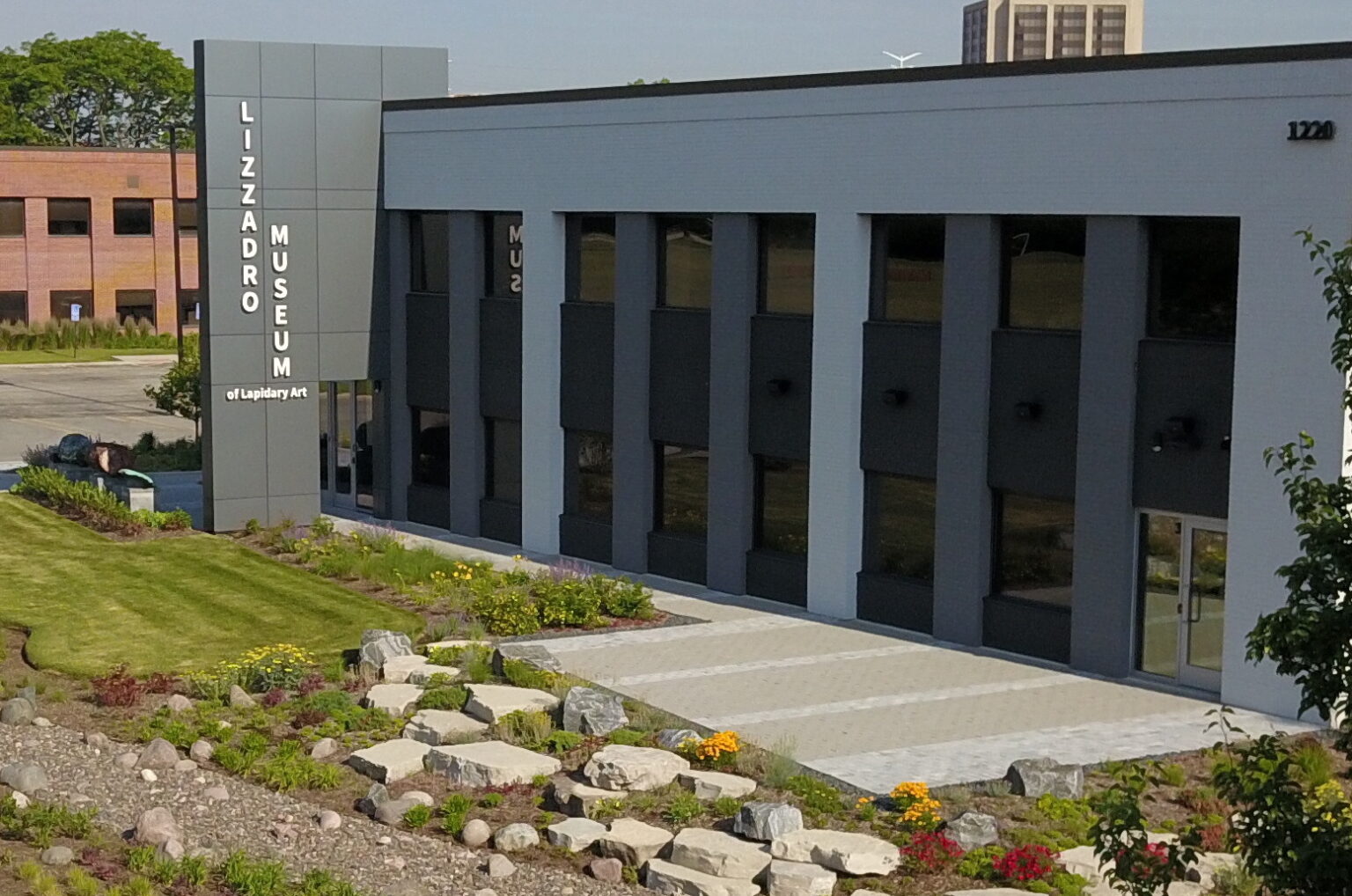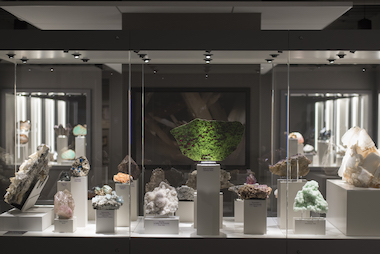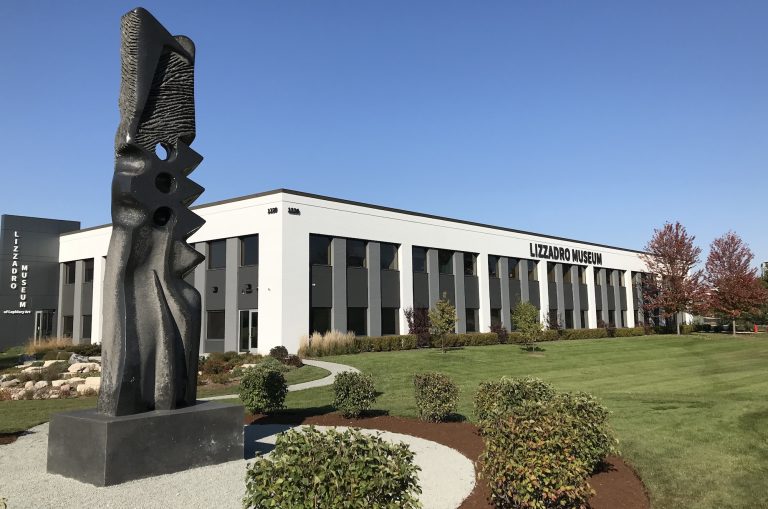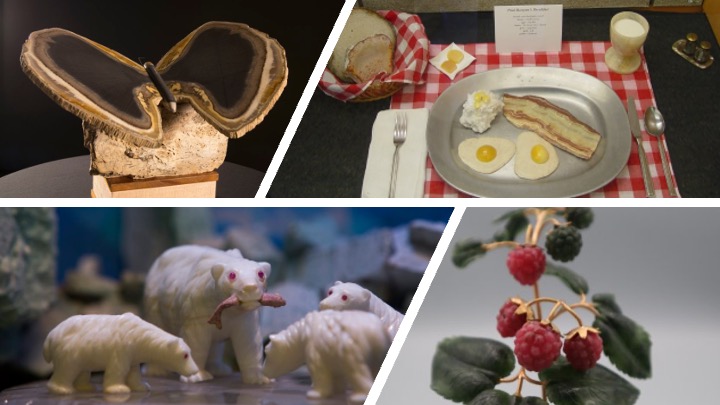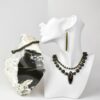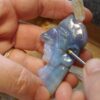Newsletter | Calendar of Events
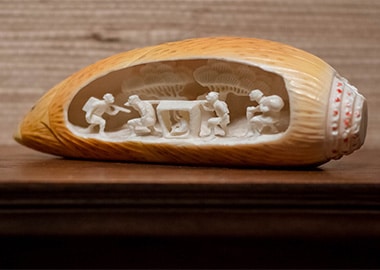
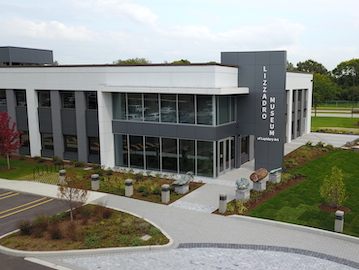

Calendar of Events
- 1212.July
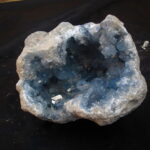
Mysterious Geodes
https://lizzadromuseum.org/event/mysterious-geodes/2:00 pm-3:15 pm07.12.2025Lizzadro Museum of Lapidary Art1220 Kensington Road, Oak Brook, IL 60523Did you know that ordinary looking rocks can hide dazzling crystal worlds inside? Geodes are nature’s hidden treasures – spherical, hollow wonders lined with sparkling crystals! Join us as we explore the fascinating theories behind how geodes form and discover where these natural marvels are found around the world. After the presentation, you’ll get to crack open your very own geode and uncover the mystery within! Bring your own rock hammer and an old sock to collect the pieces. Each participant gets two crack open geodes.
Lecture/Activity – 2:00 p.m. – 75-minutes
Ages 7 and up
Fee: $10 per Person
Museum Members $5
Reservations Required
Register here - 1919.July
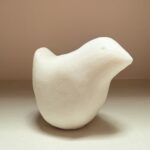
The First Cut: Soap Carving for Future Stone Artists
https://lizzadromuseum.org/event/the-first-cut/2:00 pm-3:00 pm07.19.2025Lizzadro Museum of Lapidary Art1220 Kensington Road, Oak Brook, IL 60523Many great stone carvers begin with soap. Join Jyl Bonguro, Italian marble carver from Chicago, for this hands-on workshop. Jyl will introduce the basics of carving using soap a soft, accessible material. Learn essential techniques, practice tool control, and start developing the skills used by professional sculptors—all while creating your own mini masterpieces.
2:00 p.m. – 60-minutes – Ages 8 and up
Fee: $25.00 per Person – Museum Members 10% off
Limited Capacity – Reservations Required
Register at here
Special Exhibit
Fan Favorites
We asked and you chose!
On display are the Fabergé-style flowers and Fabergé-style animals, all carved in Idar-Oberstein, Germany;
the stone butterflies created in Oregon using stones from the Pacific Northwest;
and Sylvia’s Rock Café – a collection of rocks and minerals that look like food!
Come see your favorites by Labor Day!
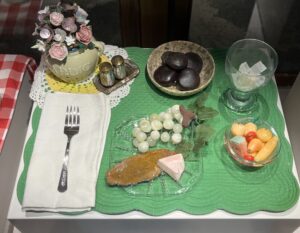
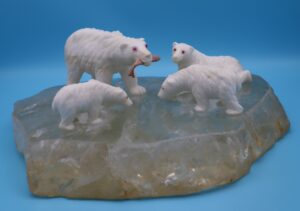
Regular Museum Admission | Regular Museum Hours
What’s in a Name?
The Many Faces of “Quartz”
By Sara Kurth
Quartz is one of the most well-known and beloved minerals, making up about 20% of the Earth’s crust. While simple in composition, just silicon and oxygen, it is incredibly varied in appearance. While many recognize quartz as “rock crystal,” amethyst, or citrine, it also forms the foundation of other popular stones like jasper and agate, a variety called chalcedony. Chalcedony is formed when water rich with dissolved silicon and oxygen flows through rocks, precipitating out microscopic quartz crystals into cavities within the rocks. Jaspers are opaque to slightly translucent chalcedony, typically colored by miniscule amounts of other chemical elements. Agates are a banded variety of chalcedony characterized by their distinctive concentric color bands. While most mineralogy classes lump chalcedony into one category, rock and mineral dealers have come up with clever titles to distinguish these stones from each other. These trade terms are commonly recognized in rock shops, including our Museum Shop! To help dispel the confusion, we have selected a few of the most common trade terms for popular “jaspers” and “agates” to explore their formation and appearance.
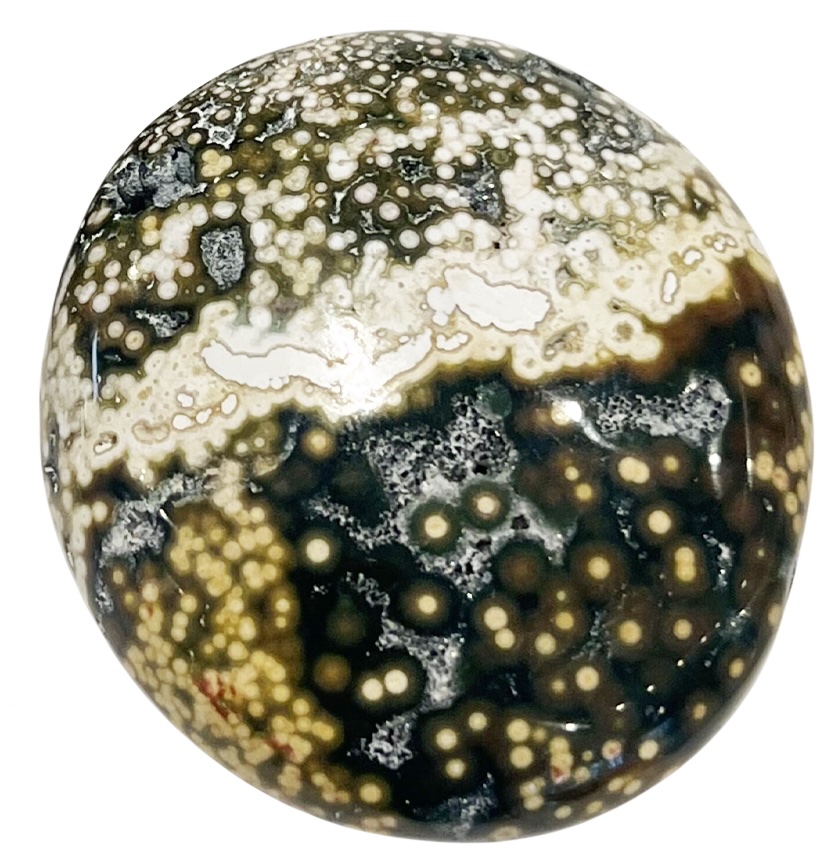 Ocean Jasper
Ocean Jasper
Ocean jasper is mineralogically described as orbicular chalcedony that occurs in volcanic tuff and rhyolite flows. Spherical aggregates called spherulites form as mineral-rich fluids flow through the volcanic rocks and change the volcanic glass into orb-shaped crystals. Mineral impurities including iron oxides and manganese oxides give ocean jasper unique colors, including blue, green, brown, red, and yellow. While there are many so-called jaspers that demonstrate these orb-like patterns, Ocean Jasper is specific only to Madagascar.
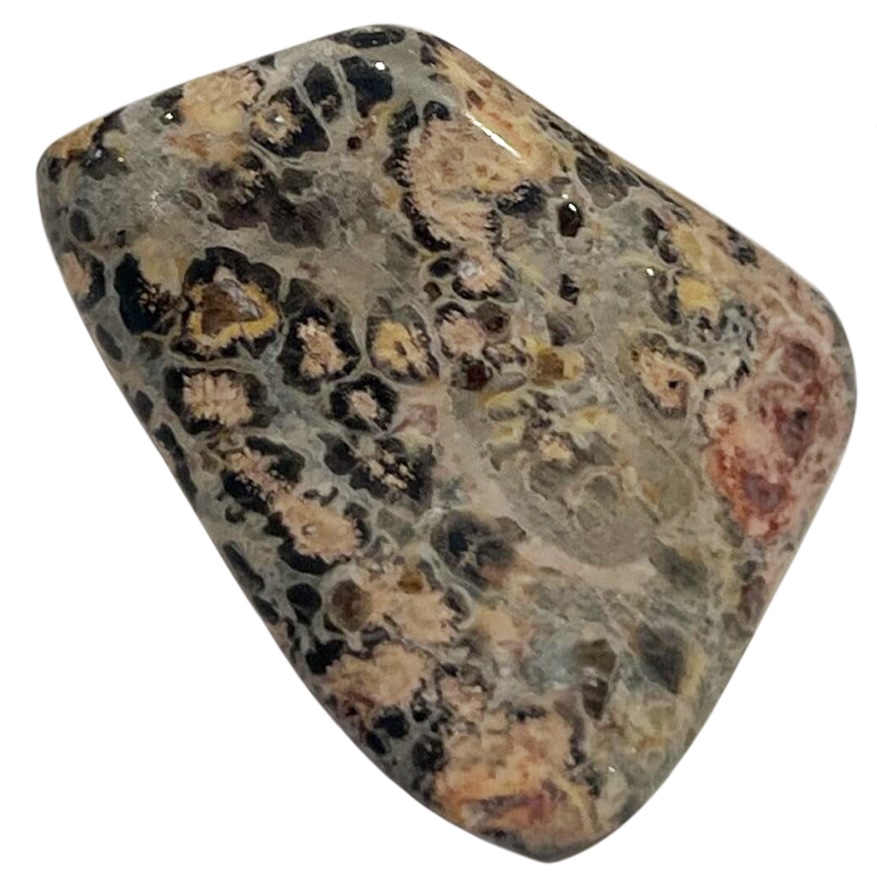 Leopardskin Jasper
Leopardskin Jasper
While similarly formed as Ocean Jasper, Leopardskin Jasper is not a jasper at all as it lacks chalcedony. It is a spherulitic rhyolite. Glassy particles in the rhyolite form spherulites and give the stone its spotted appearance.
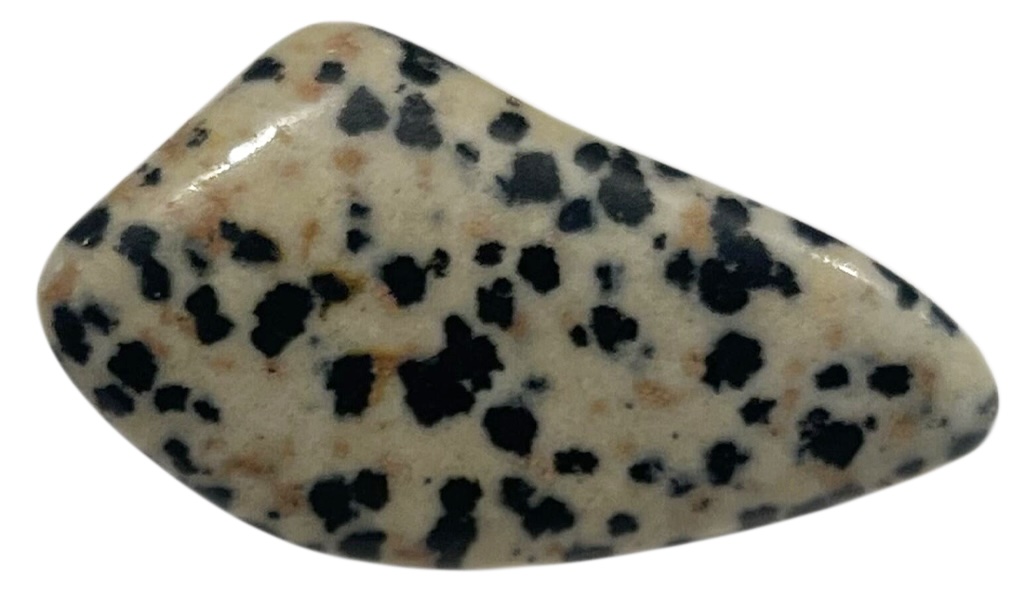 Dalmatian Stone
Dalmatian Stone
“Dalmatian Stone,” also called “Dalmatian Jasper,” is a white to cream-colored material with black spots. It is an igneous rock, composed of a small amount of quartz and albite, a white plagioclase feldspar. The black spots are an amphibole mineral called Arfvedsonite. Scientists debate whether the stone forms in an intrusive or extrusive igneous setting. Although commonly referred to by its trade name, Dalmatian Stone is not considered a true jasper because it lacks chalcedony.
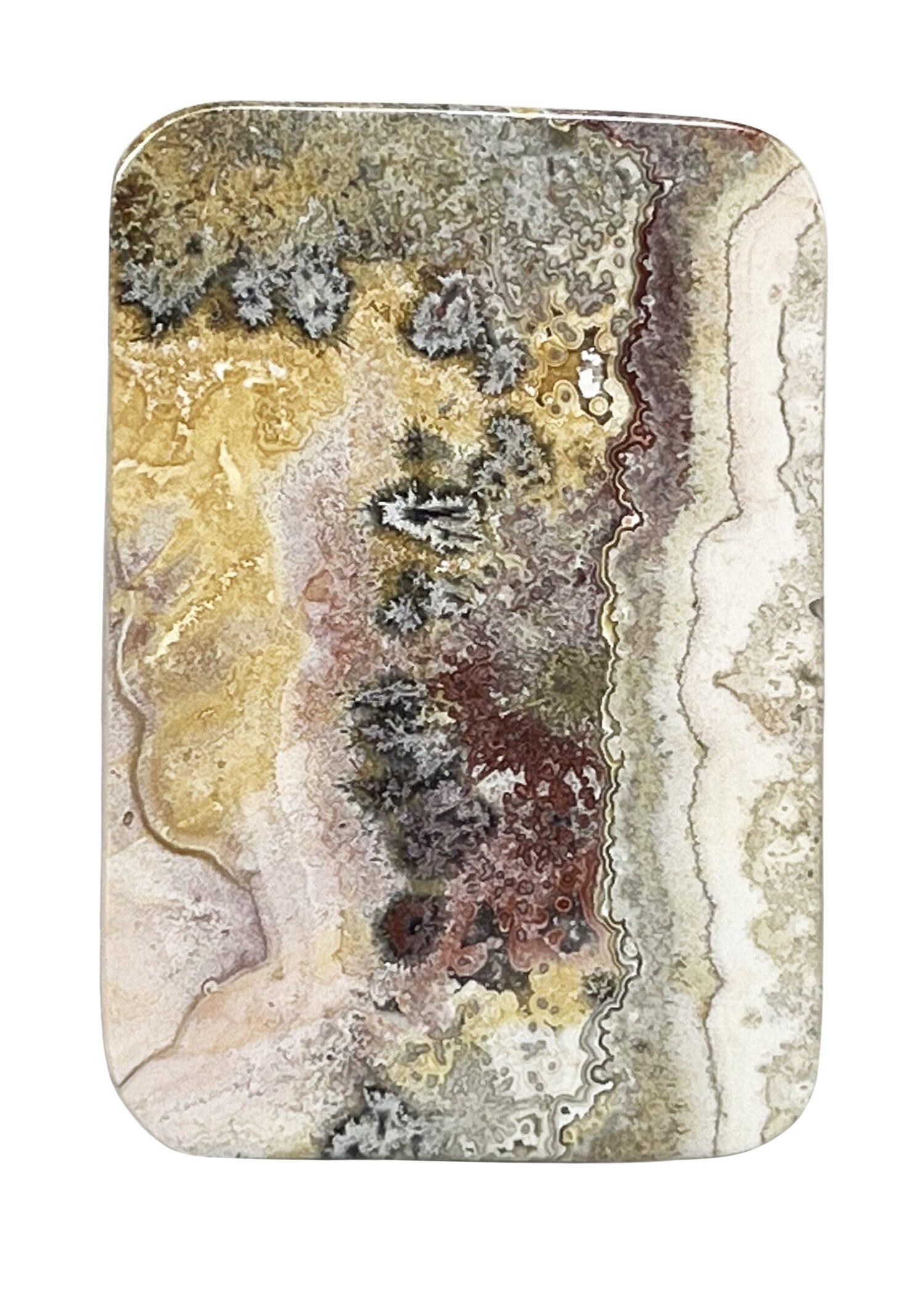 Crazy Lace Agate
Crazy Lace Agate
Crazy Lace Agate, also called Mexican Agate, Dogtooth lace agate, and Red Lace Agate, all originate in Chihuahua, Mexico. The lace agates found in this area formed during the Cretaceous Period 90-65 million years ago. The intricate patterns appear as delicate pieces of lace, along with tubes, bands, and eyes. Pieces of calcite can be seen as inclusions, broken off during formation of the agate. It is found primarily in veins where water passed through the rock.
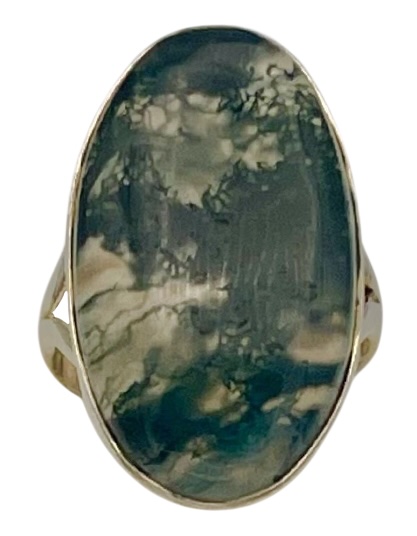 Moss Agate
Moss Agate
This agate looks like moss growing within the stone. The tubes and holes within the agate are filled with the quartz polymorph cristobalite. Cristobalite has the same chemistry as quartz, but forms spherulites in obsidian (snowflake obsidian) and the dendritic tubes found in agates. While the colors of Moss agate can be highly varied, green is the most preferred color to collectors.
The names given to stones can often be misleading. Commonly used classifications don’t always reflect how the stones were formed. At the Lizzadro Museum, we use trade names for many of our specimens, but we strive to be as clear as possible about the nature of each stone and to translate every unique story they represent.
References
Parting Shots: A Closer Look at Ocean Jasper, Mineralogical Society of America Elements, 2014, 10(5): 398. 5/29/2025.
Powolny, T. and Dumariska-Slowik, M. True Colors of Dalmatian Stone. Gems & Gemology, Fall 2017, V. 53, N. 3.
Zenz, Johann. Agates II. 2009.
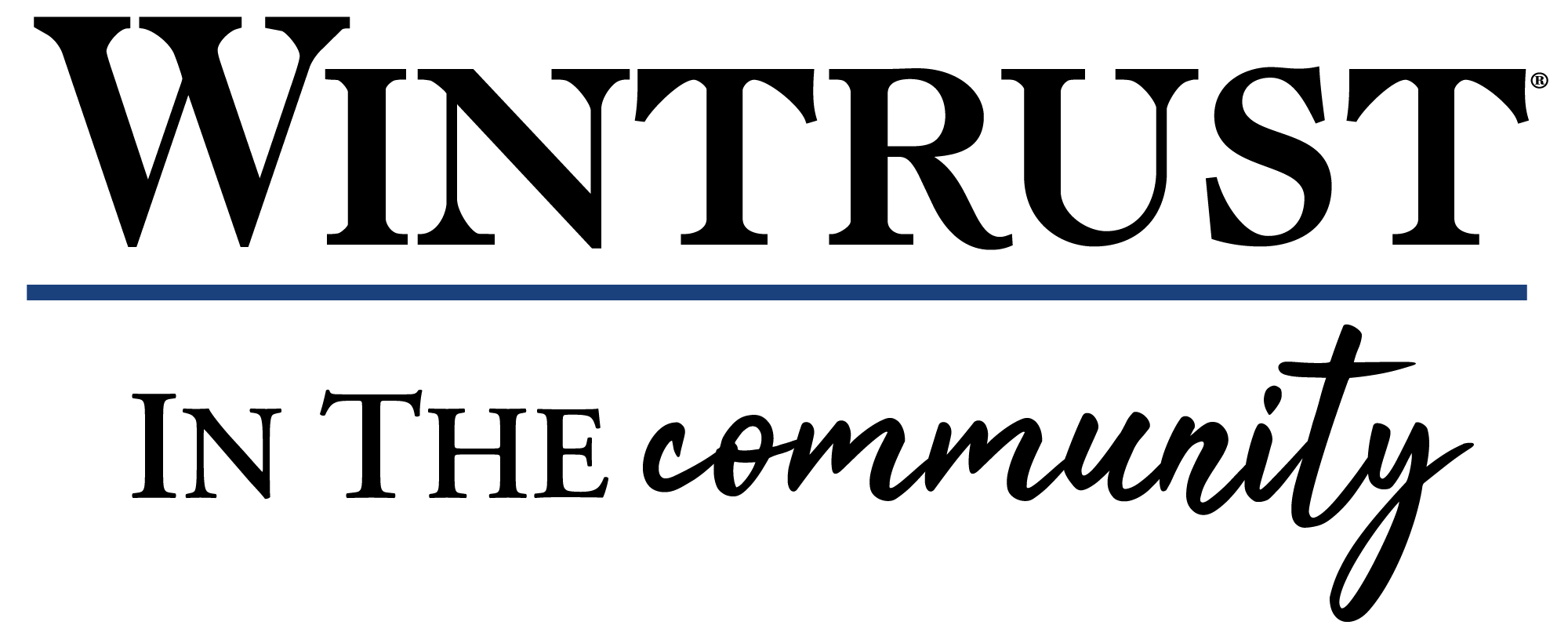
Field Trip Assistance Grant
now taking applications!
Applications for the Field Trip Assistance Grant
are now available online here.
This program will provide transportation and tour costs
to eligible students in the Chicagoland area.
Wintrust is providing $10,000 for eligible Title 1 schools and a
Museum Board Member is sponsoring field trips for schools of the Diocese of Joliet.
Interested teachers and school districts should reach out to our Educator, Sara Kurth.

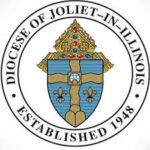
Want to stay informed?
Sign up below to receive our emails!
By submitting this form, you are consenting to receive marketing emails from: The Lizzadro Museum of Lapidary Art, info@lizzadromuseum.org. You can revoke your consent to receive emails at any time by using the SafeUnsubscribe® link, found at the bottom of every email. Emails are serviced by Constant Contact
Become a Member and Save!
A membership to the Lizzadro Museum is the perfect gift
for the rockhounds in your life!
Join today!
Have you missed a lecture?
Check out our YouTube Channel
to watch all of our virtual lectures!

From the Curator’s Corner
